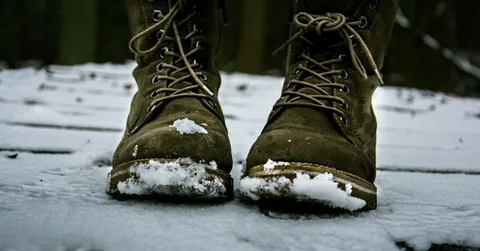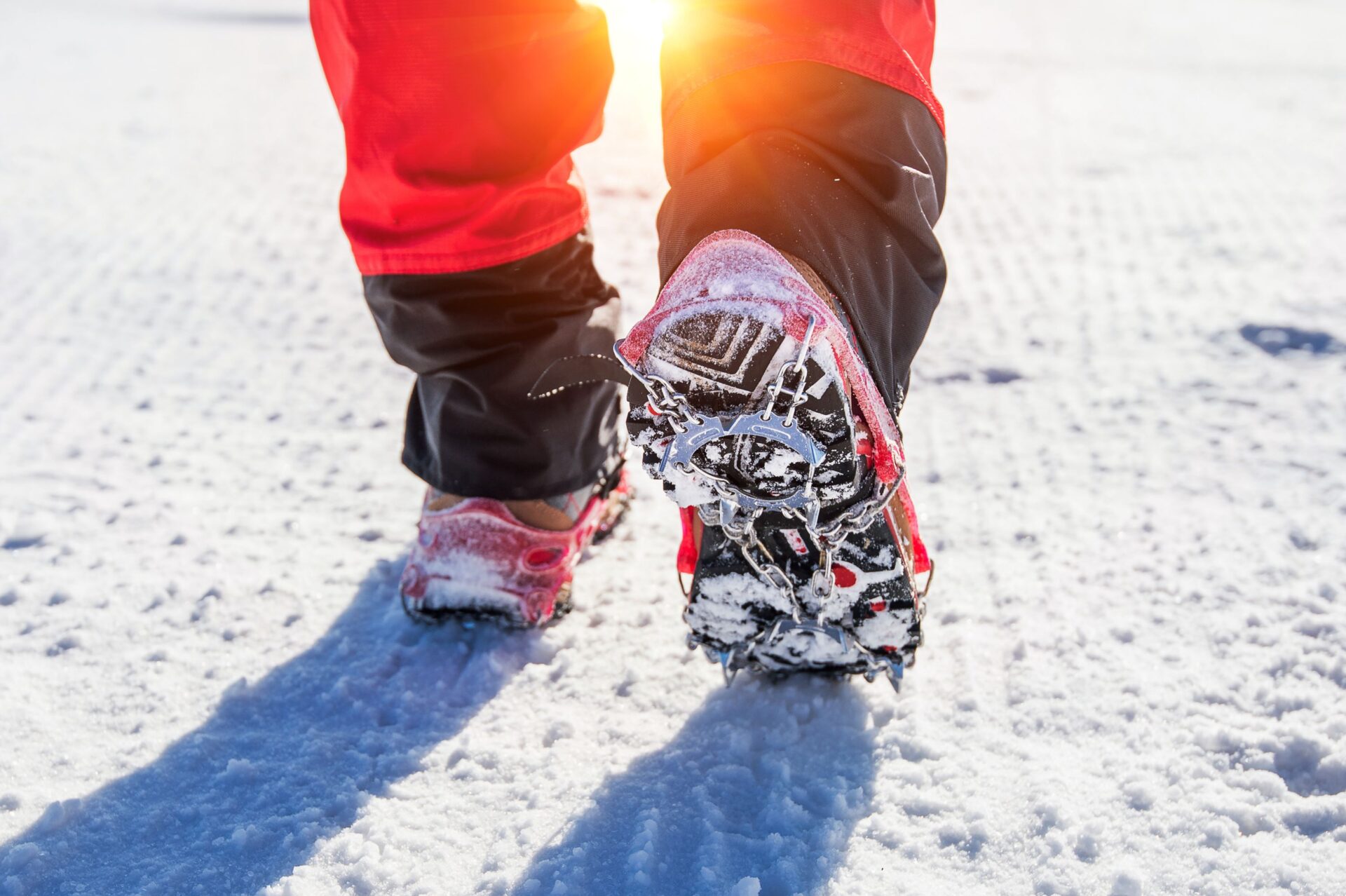Winter boots for seniors with swollen feet are a necessity in the cold. They protect your feet from the cold, snow and salt, while providing support and comfort to those who suffer from swelling. However, it can be tricky to pick the right pair of boots when dealing with swollen feet. Fortunately, here are some tips on how to choose the perfect pair of boots for your needs:
Understanding Swollen Feet in seniors: Causes and Concerns
When you get older, your body changes. You might notice that your feet have become swollen and uncomfortable. This is a common problem among seniors because of changes in the circulatory system that can occur with age.
The causes of swollen feet in seniors include:
- Arthritis or other joint problems
- High blood pressure (hypertension)
- Heart disease and other cardiovascular disorders
This article will discuss how to treat swollen feet in seniors, causes of swollen feet in seniors, signs and symptoms of swollen feet in seniors as well as general information on this topic
The Importance of Proper Boots for seniors with Swollen Feet
Swollen feet are a common problem for seniors. Several things, including dehydration, high blood pressure and diabetes can cause them. Swollen feet can also indicate other health issues like heart disease or kidney disease. If your feet have become swollen and uncomfortable at any point during the day or night, it’s important to seek medical attention immediately!
Wearing boots that fit properly will help reduce swelling in your lower extremities by providing support around the ankles where they need it most–and without cutting off circulation to vital areas like the toes (which would cause even more pain). Conversely, wearing tight-fitting boots could worsen swelling by putting too much pressure on those areas without giving them enough room to move freely inside the shoe itself; this is why we recommend choosing footwear made specifically with seniors’ needs in mind.
Features to Seek In Boots for Swollen Feet: Comfort and Support
You should consider several features when looking for the right boots for swollen feet. Comfort is important because it will reduce pain and help you feel good while walking. Support is another feature that can help with swelling, circulation, and balance. Breathability is also important because it keeps moisture away from the skin and allows sweat to evaporate more easily. Flexibility allows movement without restriction so your arches aren’t stressed when stepping down from an elevated surface such as a curb or stairway.
Top Boot Styles for seniors with Swollen Feet: Recommendations for Relief
The best boots for swollen feet are those that offer support and comfort. You want to find shoes or boots that will keep your feet stable and reduce pain while being stylish enough to wear outside the house.
To start, consider what type of material makes up the upper portion of each boot: leather is a popular choice because it’s sturdy and durable. Still, other materials like canvas can be useful for seniors with swollen feet if they want more flexibility in their footwear choices. If you have narrow ankles or calves (or plan on wearing thick socks), consider buying adjustable boots so they’ll fit comfortably around those areas without being too tight – this also helps ensure proper circulation throughout your legs!
Breathability and Flexibility of Winter Boots for seniors
Breathability and flexibility are two important factors for winter boots for seniors. Breathability helps to keep your feet dry, which can help prevent infections and the formation of blisters. Flexibility is also key, because it allows you to get the boot on more easily, even if you have trouble bending over or have limited leg mobility.
If you’re looking for a pair of winter boots that will be comfortable for swollen feet but still provide adequate protection from the elements (and snow!), look no further than our list below:
Orthopedic Boots vs. Adjustable Boots
The first thing to consider is whether you want an orthopedic or adjustable boot. If your swollen feet are due to arthritis or other conditions, it may be best to wear an orthopedic shoe. These types of shoes offer more support and stability than adjustable shoes do–they’re made with stiffer materials and have more rigid soles so that they don’t bend as much when pressure is applied (like when walking). They also tend to have higher arches, which helps distribute weight evenly across your feet while reducing pressure points on certain areas such as the heel or ball-of-the-foot area where swelling might occur most often.
On top of providing better overall support than adjustable shoes do, many people find that they find these types of footwear more comfortable because they have fewer seams inside them (which can rub against sensitive skin) so there’s less rubbing going on when wearing them all day long either at home or out doing errands around town! They’re also typically cheaper than buying multiple pairs because once purchased there’s no need for replacing every few months due their durability — just keep clean by washing regularly after each use so nothing gets inside where mold could start growing over time 🙂
Tips for Finding the Perfect Size: Ensuring a Snug, Non-Restrictive Fit
Finding the right size is crucial to ensure a snug, non-restrictive fit. If your boots are too big, they will flap around and cause blisters on your feet. If they’re too small, they’ll pinch your toes, making walking difficult or even painful.
Boots should be snug but not tight; if you can’t comfortably wear them for long periods without feeling pain or pressure points forming on your heels or instep area (the top of your foot), then those boots aren’t right for you!
If you’re buying a new pair of boots, try them on with two or three pairs of heavy wool socks. If they still feel okay, then wear them around the store for a few minutes before making your purchase.
Combining Compression Wear with Boots for seniors: Optimal Relief
If you want to keep your feet comfortable and supported, consider adding compression wear to the mix. Compression socks and sleeves are an excellent choice for anyone with swollen ankles, as they can help reduce swelling by improving circulation. They also offer extra support around the area where there is swelling to prevent further damage from occurring.
Compression stockings are another great option if you have swollen feet or ankles that need extra care while wearing boots for seniors. These socks have elastic bands that wrap around each leg just below the knee (or wherever else they may be needed) in order to provide firm compression throughout this area of concern so that blood flow remains at an optimal level throughout all parts of your lower body
DIY Boot Modifications for Swollen Feet: Customizing For Comfort
Add a heel lift or extra cushioning in the sole. This is a good option if you want more support and comfort, but don’t want to spend money on professional modifications.
Cut off some of the boot’s tongue so it doesn’t rub against and press on your swollen feet as much. This can be done with scissors or with an exacto knife (be careful!). Make sure that there isn’t any stitching holding the tongue down before cutting; otherwise, you might end up with holes in your socks!
Use insoles from another pair of shoes that fit better than what came with your boots (if possible). They’ll provide extra cushioning where it’s needed most–underfoot! If this isn’t possible due to size restrictions or other factors, try putting an old sock overtop one side at night before bedtime so it gets stretched out overnight while wearing them around housework during daytime hours instead.
Taking Care of Your Swollen Feet Boots: Cleaning and Maintenance Tips
When you’re out in the elements, taking care of your boots is important. Here are some tips for cleaning and caring for your swollen feet boots:
- Cleaning – Use a stiff brush or other tool to remove dirt, debris and mud from the surface of the boot. You can also use a damp cloth with water if necessary. Gently wipe away any excess moisture with another clean cloth or towel until no more water drips off when held upside down over an empty sink or bucket (or wherever else is convenient).
- Cleaning Leather – For leather boots only: Apply mild soap onto a soft cloth and rub gently into leather areas such as laces and soles where dirt tends to accumulate most often; rinse well with warm water after cleaning each section thoroughly so there’s no residue left behind on either side of either material type before moving onto another area that needs attention at this time–you’ll want all surfaces clean before proceeding further into drying steps below! When finished rinsing off all traces from both sides’ surfaces…dry them by hand using soft absorbent towels until all moisture has been absorbed into these towels instead!”
FAQS
How do I clean my boots?
You can wipe your boots with a damp cloth if your boots are leather. Check the manufacturer’s instructions first if they’re made of another material.
What should I store my boots in when they aren’t being worn?
If you have a place to store them where they won’t get dirty or wet (like inside an enclosed closet), that’s best. But if not, try putting them on shoe trees so they don’t lose shape over time; this will also help keep them smelling fresh!
What size should I buy for boots for seniors?
As we said before: always try on several pairs and pick the ones that fit best around the widest part of your foot–that way there won’t be any unnecessary pressure points anywhere else! And remember: if one size doesn’t work out perfectly yet another pair might just do better instead…so don’t give up hope just yet!
Conclusion
We hope this article has given you a better understanding of the importance of finding the right boots for your swollen feet. If you have any questions or concerns, please don’t hesitate to contact us!


